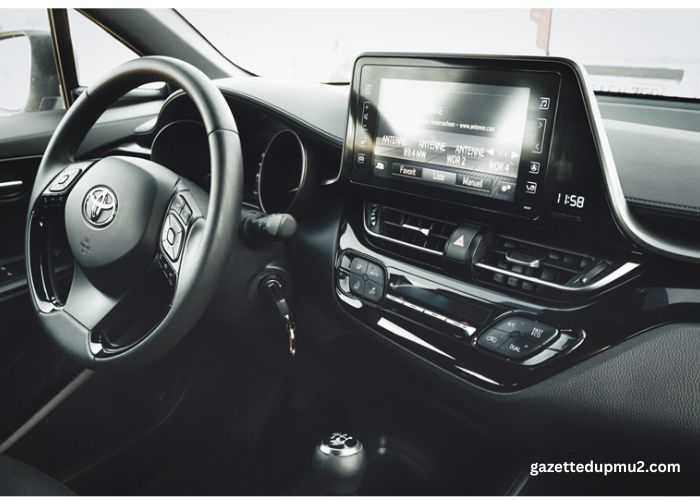Have you ever wished your car could react faster than you? Auto sensors are making that possible. These smart technologies help prevent crashes, keep drivers alert, and make roads safer for everyone.
From automatic braking to blind spot alerts, they reduce human error and improve driving. As safety standards rise, car safety sensors are becoming essential in modern vehicles.
In this article, we’ll explore how they work, why they matter, and how they’re shaping the future of car safety.
Adaptive Cruise Control
Adaptive cruise control (ACC) uses sensors to maintain a safe following distance from the vehicle in front. Radar or cameras monitor the speed of the car ahead and adjust the speed of your vehicle automatically. This reduces the need for constant speed adjustments on highways or long-distance drives, offering a more comfortable driving experience.
ACC systems can also slow down and stop the vehicle in heavy traffic. When the road clears, the system will accelerate back to the set speed. This feature helps to keep drivers focused and reduces stress during long drives.
Blind Spot Detection
Blind spot detection uses sensors to identify vehicles in a driver’s blind spots. The system typically uses radar to monitor the areas on the sides and behind the vehicle. When a vehicle is detected, the system alerts the driver, usually with a visual or audible warning.
This feature prevents drivers from changing lanes when there is another vehicle in their blind spot. It is particularly useful on highways and multi-lane roads. Blind spot detection helps reduce the risk of side-impact crashes and lane-change accidents.
Lane Departure Warning
Lane departure warning (LDW) systems use cameras to monitor lane markings on the road. If the vehicle drifts out of its lane without signaling, the system alerts the driver. This warning can be in the form of an audible sound, a visual signal, or even a vibration in the steering wheel.
LDW helps prevent accidents caused by driver distraction or drowsiness. It provides a timely reminder for the driver to correct their steering. This feature improves overall safety, especially on long trips where fatigue can be a factor.
Automatic Emergency Braking
Automatic emergency braking (AEB) systems use radar and cameras to detect potential collisions. When a risk of an accident is identified, the system automatically applies the brakes if the driver does not respond. This can reduce the severity of a crash or prevent it entirely.
AEB is especially helpful in situations where the driver is unable to react quickly enough. The system can detect vehicles, pedestrians, or other obstacles in the path. It is an important safety feature that helps prevent rear-end collisions.
Forward Collision Warning
Forward collision warning (FCW) systems use sensors to detect objects ahead of the vehicle. These systems provide a warning if they detect a potential collision. The driver is alerted with a sound or visual cue, giving them time to react.
FCW systems help drivers maintain safe distances between vehicles. They are effective in both city traffic and highway driving. In vehicles like the Honda Accord Hybrid, this technology can significantly reduce the likelihood of rear-end accidents, ensuring a safer driving experience.
Pedestrian Detection
Pedestrian detection systems use cameras and radar to detect pedestrians crossing or walking near the road. These systems can recognize a person’s movement and predict their path. If a collision is imminent, the system can automatically apply the brakes.
This technology is especially useful in urban environments with heavy pedestrian traffic. It can help prevent accidents in situations where the driver may not notice a person crossing the street. Pedestrian detection enhances overall vehicle safety and protects vulnerable road users.
Parking Sensors
Parking sensors use ultrasonic technology to detect obstacles near the vehicle. These sensors are typically placed on the front and rear bumpers. When an obstacle is detected, the system alerts the driver with sounds that increase in frequency as the vehicle gets closer.
Parking sensors are valuable in tight or crowded spaces. They help drivers avoid damaging their car or other objects while parking. The system is simple but effective in preventing low-speed collisions during parking maneuvers.
Surround-View Camera System
The surround-view camera system uses multiple cameras around the vehicle to create a 360-degree image of the surroundings. This view is displayed on the vehicle’s screen, allowing the driver to see what is around them. It helps drivers navigate difficult parking situations or tight spaces with better visibility.
This system is especially useful in parking lots and busy urban areas. It helps eliminate blind spots by providing a clear picture of nearby obstacles. Surround-view camera systems make parking and maneuvering safer for both drivers and pedestrians.
Traction Control Systems
Traction control systems use sensors to monitor the speed of the wheels during driving. If one or more wheels begin to spin too quickly, the system automatically adjusts the engine power to maintain traction. This helps prevent loss of control on slippery or uneven surfaces.
Traction control is important in conditions like snow, rain, or icy roads. The system ensures that the wheels maintain grip and do not slip or skid. By maintaining stable traction, the vehicle is less likely to slide or lose control during acceleration.
Electronic Stability Control
Electronic stability control (ESC) uses sensors to detect when the vehicle is losing traction or control. If the system detects instability, it automatically applies the brakes to individual wheels to help regain control. ESC helps the driver maintain control in situations where skidding or loss of traction occurs.
ESC is an essential safety feature, especially on slippery roads or in emergency maneuvers. It reduces the likelihood of rollover accidents by preventing loss of control. This system can also be helpful in tight corners or when avoiding an obstacle.
With Auto Sensors Your Safety Is Always in Focus
Auto sensors are transforming how we think about vehicle safety. They provide drivers with advanced technology that can prevent accidents and protect passengers. As these systems continue to evolve, the safety features in modern vehicles will only improve.
The future of driving will likely be safer and more efficient due to evolving vehicle sensor technology. These innovations help ensure that both drivers and pedestrians are protected on the road.
Did you learn something new from this article? If so, be sure to check out our blog for more educational content.





